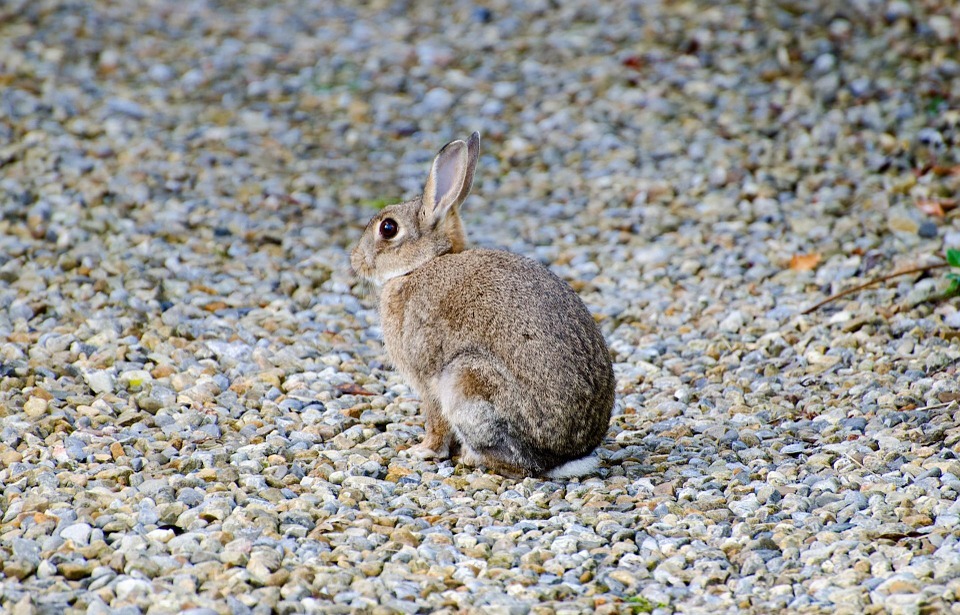This guide will explore the intricacies of rabbit potty training, providing comprehensive information and practical tips to help you achieve success. We'll cover everything from understanding your rabbit's natural instincts to troubleshooting common challenges. By the end, you'll be equipped with the knowledge and tools to create a harmonious and hygienic environment for your furry friend.
Part 1: Unveiling the Secrets of Rabbit Behaviour

1.1 The Natural Instinct for Cleanliness
Rabbits are inherently tidy creatures with a strong urge to defecate in specific areas. This instinct is the foundation for successful potty training. However, unlike cats and dogs, they don't have a strong urge to bury their waste. Instead, they often prefer open spaces for elimination.
1.2 The Importance of Understanding Your Rabbit's Personality
Every rabbit has a unique personality, and this can influence their potty training journey. Some rabbits are naturally quick learners, while others may need more time and patience. Understanding your rabbit's temperament can help you tailor your training methods for optimal success.
Part 2: Creating the Perfect Potty Training Environment

2.1 The Power of a Suitable Litter Box
Choosing the right litter box is essential. Consider these factors:
- Size Matters: Opt for a spacious litter box, allowing your rabbit to move around comfortably. A rectangular or oval shape with low sides is generally ideal, offering easy access and exit.
- Material Matters: Choose a safe, non-toxic material. Plastic, ceramic, and stainless steel are popular choices, ensuring easy cleaning and durability.
- Placement is Key: Position the litter box in a quiet and secluded spot, away from food and water bowls. A corner of the room is often a good choice, providing a sense of privacy for your rabbit.
2.2 The Art of Choosing the Right Litter
Selecting the right litter is equally important, attracting your rabbit to use their designated area. Explore these popular options:
- Paper-based Litter: This eco-friendly choice is readily available, affordable, and safe for rabbits. Look for options free from dyes and fragrances.
- Wood-based Litter: Aspen shavings are a common choice, known for their absorbent properties and pleasant scent. Opt for dust-extracted shavings to minimize respiratory irritation.
- Clay Litter: While effective at absorbing urine, clay litter can be dusty and potentially harmful if ingested. It's generally not recommended for rabbits.
- Grass Hay: Timothy hay, a natural and safe option, is excellent for your rabbit's digestive health. It also provides a natural bedding that can be used in the litter box.
2.3 Creating a Rabbit-Friendly Home
A rabbit-proofed environment is crucial for successful potty training. Here's how to create a safe and stimulating space:
- Secure the Perimeter: Identify potential hazards like electrical cords, poisonous plants, and sharp objects, and make them inaccessible to your rabbit.
- Provide Adequate Space: Rabbits need ample space to roam and exercise. Consider a dedicated play area or a rabbit-proofed room.
- Offer Enrichment: Provide a variety of toys, tunnels, and hiding places to keep your rabbit entertained and stimulated.
Part 3: Mastering Potty Training Techniques
3.1 Establishing a Consistent Routine:
Consistency is key to success. Introduce a regular feeding schedule, feeding your rabbit at the same time each day. This helps establish predictable times for elimination, creating a predictable routine for your rabbit.
3.2 Observing Your Rabbit's Behaviour:
Pay close attention to your rabbit's behaviour. Notice signs of restlessness or pacing that may indicate an urge to defecate or urinate. When you observe these signs, gently guide your rabbit to their litter box.
3.3 Positive Reinforcement:
Rewarding good behaviour is essential. Praise your rabbit with kind words and gentle petting, or offer a small treat like a piece of fresh parsley or a favourite toy. Positive reinforcement encourages your rabbit to repeat the desired behaviour.
3.4 Managing Accidents:
Accidents will happen, especially during the initial training period. Don't get discouraged! Clean up accidents promptly using a safe, pet-friendly cleaner. Avoid harsh chemicals, which can be harmful to your rabbit.
3.5 Preventing Litter Box Aversion:
Some rabbits develop an aversion to their litter box due to discomfort or unpleasant experiences. Here's how to prevent this:
- Litter Box Placement: Ensure the litter box is in a quiet and comfortable location, away from noisy appliances or high traffic areas.
- Litter Type: Experiment with different litter types to find one that your rabbit enjoys.
- Cleaning Frequency: Clean the litter box regularly to prevent odour buildup and ensure a hygienic environment.
Part 4: Understanding and Addressing Common Challenges
4.1 Tackling Marking Behaviour:
Rabbits may engage in marking behaviour, typically spraying urine on vertical surfaces. This is often a territorial response or a sign of stress. Here's how to address it:
- Neutering/Spaying: Spaying or neutering your rabbit can significantly reduce marking behaviour.
- Environmental Enrichment: Provide ample space, toys, and hiding spots to alleviate boredom and stress.
- Cleaning: Thoroughly clean any areas that have been marked using a pet-safe cleaner.
4.2 Dealing with Hiding and Defecating:
Some rabbits prefer to hide in corners or under furniture to defecate. This behaviour may be related to fear, anxiety, or a preference for privacy.
- Encourage Exploration: Provide your rabbit with a variety of hiding spots and tunnels to encourage exploration and reduce anxiety.
- Gradual Introduction: Slowly introduce your rabbit to new environments and avoid sudden changes that may trigger fear.
4.3 Dietary Considerations for Potty Training Success:
Diet plays a significant role in urine production. A balanced diet rich in fresh hay, leafy greens, and vegetables can help reduce urine volume and odour.
- High-Quality Hay: Timothy hay is essential for a rabbit's digestive health and can help reduce urine production.
- Fresh Vegetables: Offer a variety of leafy greens and vegetables, such as kale, spinach, and carrots.
- Limited Treats: Limit the amount of sugary treats, as they can contribute to urine production and bladder problems.
Part 5: Common Questions and Answers
5.1 What if My Rabbit Still Has Accidents?
Accidents can happen even after successful potty training. This could be due to changes in environment, stress, or medical issues. Consult a veterinarian to rule out any underlying medical conditions.
5.2 How Long Does Potty Training Take?
Potty training a rabbit can take several weeks or even months, depending on individual temperament and environment. Be patient, consistent, and positive, and your rabbit will eventually learn the desired behaviour.
5.3 Can I Use Punishment to Train My Rabbit?
Punishment is not effective for rabbit training. It can lead to fear, anxiety, and aggression. Focus on positive reinforcement and rewarding good behaviour.
5.4 Is It Necessary to Potty Train My Rabbit?
Potty training is highly recommended for both your rabbit's well-being and your own peace of mind. It helps create a clean and hygienic environment, preventing health issues and odour problems.
5.5 How Can I Prevent My Rabbit from Chewing on Furniture?
Provide your rabbit with plenty of chew toys made from safe materials. Redirect them to their toys when they attempt to chew on furniture.
5.6 Should I Let My Rabbit Have Free Range of the House?
It's generally advisable to provide a designated area for your rabbit, such as a rabbit-proofed room or a playpen. This will help manage their behaviour and reduce accidents.
5.7 What Should I Do if My Rabbit Stops Using the Litter Box?
If your rabbit suddenly stops using the litter box, consider potential causes, such as stress, illness, or discomfort with the current litter box or litter type. Observe your rabbit's behaviour, consult a veterinarian if necessary, and try adjusting the training approach.
Everyone is watching
-

Do Rabbits Lay Eggs? (The Surprising Truth)
OTHER TYPES OF PETSThis article will unravel the common misconception that rabbits lay eggs, exploring the fascinating world of r...
-

Can Rabbits Eat Grapes? A Guide to Safe Rabbit Treats
OTHER TYPES OF PETSThis comprehensive guide will explore the safety and suitability of grapes for rabbits, providing detailed inf...
-

What's a Group of Rabbits Called? (A Comprehensive Guide)
OTHER TYPES OF PETSThis article delves into the fascinating world of rabbits, exploring the various terms used to describe a grou...
-

Predators That Hunt Rabbits: A Guide to Natural Enemies
OTHER TYPES OF PETSI've always been fascinated by the circle of life, that delicate dance between predator and prey. Growing up ...
-

Are Rabbits Nocturnal Animals?
OTHER TYPES OF PETSThe question of whether rabbits are nocturnal animals is a fascinating one, with a surprisingly complex answer...
